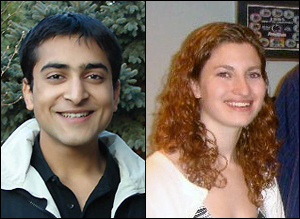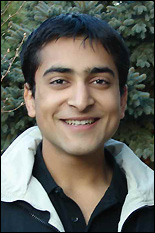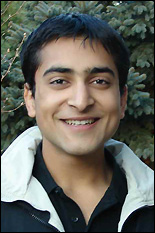News Story
Gupta, Simons Win Inaugural Undergraduate Research Awards

Left: First place ChBE Undergraduate Research Award winner Apoorv Gupta. Right: Second place winner Margaret Simons.
Gupta, who received the first place Undergraduate Research Award, works in Fischell Department of Bioengineering professor and chair William Bentley's Molecular & Metabolic Engineering Laboratories. There, he is part of a team engaged in the study of quorum sensing, a cell-to-cell communication process that allows groups of single celled bacteria to act as multicellular entities, in some cases allowing them to become pathogenic. Gupta is the second author of a paper published in ACS Nano and is the first author of a paper in preparation. His work with Bentley's group earned him a 2010 Howard Hughes Medical Institute Undergraduate Research Fellowship and a 2011-2012 Goldwater Scholarship.
Simons, who received the second place Undergraduate Research Award, works in ChBE assistant professor Ganesh Sriram's Metabolic Engineering Laboratory, where she studies the metabolic networks of poplar tree cells. The Sriram Group and their collaborators, including Dr. Gary Coleman (Plant Sciences and Landscape Architecture), are investigating poplar for its potential as a viable, renewable biofuel crop. Most recently, Simons presented a poster of her work and co-authored a talk given by a senior group member at the 2011 national meeting of the American Institute of Chemical Engineers (AIChE). Simons' work is supported in part by a NSF-funded project focused on genome-scale studies of poplar, and is also funded in part by ASPIRE. ASPIRE, A Scholars Program for Industry-Oriented Research in Engineering, offers Clark School undergraduate students the opportunity to move beyond the classroom by working with faculty or staff on real-world engineering projects.
Published January 10, 2012











